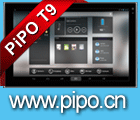ISE 2025 showcases some of the most advanced display technologies, and one standout is the Ventana microLED video wall, featured at the Crestron booth. Brian from Megapixel, a technical support specialist, discusses how this high-performance display provides exceptional image quality while also being an ideal solution for large-scale installations. The challenge many content creators face when filming these displays is the appearance of the Moiré effect, which results from an interference pattern between the camera sensor and the LED panel structure.
Moiré occurs when the camera’s pixel grid clashes with the LED array, creating distracting artifacts in the recorded video. Brian suggests a simple but effective technique to mitigate this: using manual focus slightly in front of the display. This soft focus prevents the camera from sharply resolving the individual LED pixels, thereby reducing the unwanted pattern. Autofocus, commonly used by smartphones and consumer cameras, often exacerbates the issue by locking onto the fine pixel structure of the display.
For those filming with smartphones at trade shows, Brian recommends increasing the recording frame rate. A higher frame rate, such as 120Hz or 240Hz, can help reduce artifacts when capturing microLED panels in motion. Another quick trick he shares is focusing on an object like a hand before slightly stepping back, which forces the camera to maintain a more optimal focal plane that minimizes Moiré.
The Ventana microLED wall supports extremely high refresh rates, ensuring that motion remains fluid regardless of the input frame rate. This means that even if the source content is 60Hz, the panel refreshes at a much higher rate, reducing flickering and ensuring smoother motion. While this doesn’t directly eliminate Moiré in recorded footage, it helps maintain image stability, making it easier to capture clear visuals.
Camera manufacturers are already addressing this problem with AI-based solutions. Many high-end professional cameras now feature automatic Moiré detection and correction. These systems adjust focus dynamically when a pattern is detected, preventing interference without requiring manual adjustments. While such technology is currently more common in high-end video production setups, it is gradually becoming more accessible.
Beyond trade shows, the Ventana microLED technology is finding applications in a variety of environments, from corporate lobbies to luxury residential installations. Its modular design allows for infinite scalability, supporting configurations from small artistic installations to massive digital canvases spanning dozens of meters. The flexibility of its frame system makes it a favorite for unique display shapes and custom installations.
One particularly interesting use case for the Ventana display is in fine art reproduction. The U-Matte version of the video wall has a specialized surface treatment that reduces reflections and enhances contrast, making digital artwork appear more like traditional paintings. This has led to its adoption in high-end residential settings and museum exhibitions where digital canvases are used to showcase rotating collections.
ISE remains a key event for showcasing cutting-edge AV technology, and the discussions around microLED filming techniques highlight how both hardware and content creation methods are evolving. As cameras become smarter and displays more advanced, the challenge of capturing LED walls without artifacts will continue to be addressed through a combination of best practices and emerging AI-driven solutions.



